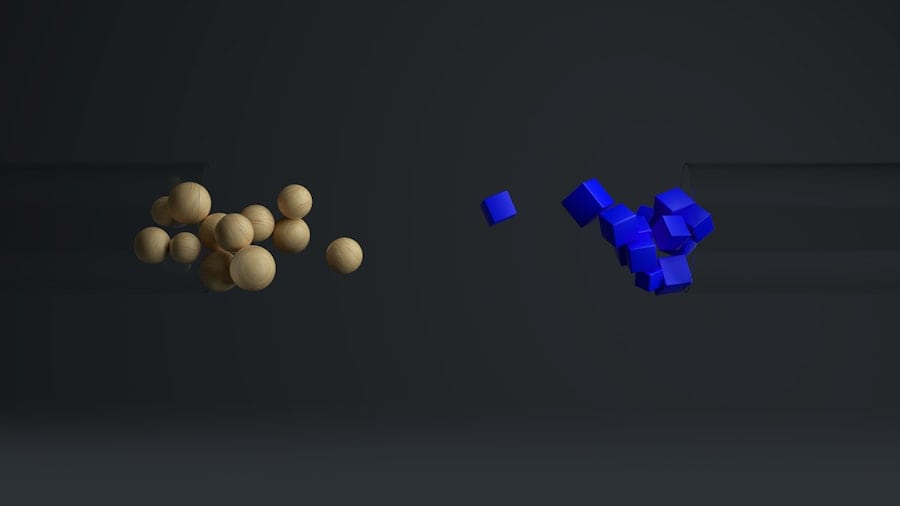OpenAI’s SQL Generator is an AI-powered tool that creates SQL queries from natural language input. This technology aims to simplify database interactions for data analysts and administrators by allowing them to generate queries without extensive SQL knowledge. Users can input questions or requests in plain English, making data analysis more accessible to professionals without technical backgrounds.
The SQL Generator is based on OpenAI’s GPT-3 language model, which has been trained on diverse internet text to understand and generate human-like responses. This enables the tool to interpret a wide range of natural language queries, accommodating users with varying levels of technical expertise. This technology has the potential to streamline workflows for both experienced data analysts and business professionals seeking to extract insights from databases.
By automating the process of writing SQL queries, users can focus more on deriving meaningful insights from their data rather than on the technical aspects of query construction.
Key Takeaways
- OpenAI’s SQL Generator is a powerful tool for automatically generating SQL queries based on natural language input.
- The capabilities of OpenAI’s SQL Generator include understanding complex queries, handling multiple tables, and supporting various SQL functions.
- To use OpenAI’s SQL Generator for data analysis, simply input a natural language question or request and the tool will generate the corresponding SQL query.
- Maximizing the potential of OpenAI’s SQL Generator involves providing clear and specific input, understanding SQL syntax, and refining the generated queries as needed.
- Common challenges when using OpenAI’s SQL Generator include ambiguous input, complex queries, and the need for manual refinement, which can be addressed by providing more context and refining the generated queries.
Understanding the Capabilities of OpenAI’s SQL Generator
Handling Various Tasks with Ease
The SQL Generator is designed to handle a variety of tasks, including selecting specific columns from a database, filtering data based on certain conditions, joining multiple tables, aggregating data, and more. This means that users can leverage the tool to perform a wide range of data analysis tasks without needing to have an in-depth understanding of SQL syntax and structure.
Accommodating Ambiguous Queries
One of the key strengths of the SQL Generator is its ability to handle ambiguous or imprecise natural language queries. The tool is designed to interpret and infer the user’s intent, allowing it to generate accurate and relevant SQL queries even when the input is not perfectly structured or articulated.
Handling Complex Database Schemas
Additionally, the SQL Generator is capable of handling complex database schemas and relationships, allowing users to generate queries that span multiple tables and incorporate various data manipulation techniques.
How to Use OpenAI’s SQL Generator for Data Analysis

Using OpenAI’s SQL Generator for data analysis is a straightforward and intuitive process. To get started, users simply need to input their natural language query into the tool’s interface, specifying their request in plain English. The SQL Generator will then process the input and generate a corresponding SQL query that can be executed against the target database.
This means that users can quickly and easily access the data they need without needing to manually write or construct complex SQL queries. When using the SQL Generator, it’s important to provide clear and specific input to ensure that the tool can accurately interpret your request. This may involve specifying the columns or fields you want to retrieve, defining any filtering conditions or criteria, and indicating any specific data manipulation operations you want to perform.
By providing clear and detailed input, you can help the SQL Generator generate more accurate and relevant SQL queries, reducing the need for manual refinement or adjustment.
Tips and Tricks for Maximizing the Potential of OpenAI’s SQL Generator
| Tip or Trick | Description |
|---|---|
| Understand the Data | Before using OpenAI’s SQL Generator, make sure to thoroughly understand the structure and content of the database you are querying. |
| Use Clear and Specific Language | When formulating your questions, use clear and specific language to help the SQL Generator understand your intent accurately. |
| Provide Context | Give the SQL Generator as much context as possible about the data and the relationships between different tables to improve the accuracy of the generated SQL queries. |
| Review and Refine | After receiving the generated SQL query, review and refine it as needed to ensure it accurately reflects your requirements. |
| Experiment and Learn | Experiment with different types of questions and learn from the generated SQL queries to improve your understanding of the SQL Generator’s capabilities. |
To maximize the potential of OpenAI’s SQL Generator, there are several tips and tricks that users can employ. Firstly, it’s important to familiarize yourself with the capabilities and limitations of the tool, as this will help you craft more effective natural language queries. Understanding how the tool interprets and processes input can help you structure your queries in a way that maximizes accuracy and relevance.
Additionally, it can be helpful to provide context or additional information when formulating your natural language queries. This can help the SQL Generator better understand your intent and generate more precise SQL queries. For example, providing information about the structure of the database, the relationships between tables, or any specific business logic or rules that apply to the data can help the tool generate more tailored and effective queries.
Common Challenges and Solutions when Using OpenAI’s SQL Generator
While OpenAI’s SQL Generator is a powerful and versatile tool, there are some common challenges that users may encounter when using the tool for data analysis. One common challenge is ensuring that the generated SQL queries are efficient and optimized for performance. The tool may generate queries that work correctly but are not necessarily the most efficient in terms of execution time or resource usage.
To address this challenge, users may need to manually review and optimize the generated queries to ensure they perform well against the target database. Another common challenge is handling complex or ambiguous natural language queries. While the SQL Generator is designed to interpret and infer user intent, there may be cases where the input is unclear or open to interpretation.
In these situations, users may need to provide additional context or refine their input to help the tool generate more accurate queries.
Integrating OpenAI’s SQL Generator into Your Workflow

Simplifying Complex Queries
By leveraging the tool’s natural language processing capabilities, you can quickly and easily generate complex SQL queries without needing to have an in-depth understanding of SQL syntax and structure. This can save time and effort, allowing you to focus on deriving insights from your data rather than getting bogged down in technical details.
Refining Queries with Control
One effective way to integrate the SQL Generator into your workflow is to use it as a starting point for query generation. Once the tool has generated a SQL query based on your natural language input, you can review and refine the query as needed before executing it against the target database. This allows you to benefit from the tool’s ability to interpret natural language queries while still maintaining control over the final query that is executed.
Enhancing Productivity
By automating the query generation process, you can redirect your attention to higher-level tasks, such as analyzing results, identifying trends, and making data-driven decisions. This can significantly enhance your productivity and accelerate your ability to drive business value from your data.
Future Developments and Potential Applications of OpenAI’s SQL Generator
Looking ahead, there are numerous potential applications for OpenAI’s SQL Generator across a wide range of industries and use cases. As the tool continues to evolve and improve, it has the potential to become an indispensable asset for data analysts, business professionals, and database administrators alike. The ability to generate complex SQL queries based on natural language input has the potential to democratize access to data analysis tools, making it easier for individuals with varying levels of technical expertise to extract valuable insights from databases.
In addition to its applications in traditional data analysis workflows, OpenAI’s SQL Generator could also be leveraged in other domains such as business intelligence, reporting, and decision support systems. The tool’s ability to interpret natural language queries could make it easier for non-technical users to access and analyze data, empowering them to make informed decisions based on data-driven insights. In conclusion, OpenAI’s SQL Generator represents a significant advancement in the field of data analysis and database management.
By leveraging the power of natural language processing, the tool has the potential to simplify and streamline the process of generating complex SQL queries, making it easier for individuals with varying levels of technical expertise to access and analyze data. As the tool continues to evolve and improve, it has the potential to become an indispensable asset for professionals across a wide range of industries and use cases.
If you’re interested in the concept of multi-universes and how they relate to the metaverse, you may want to check out this article on Exploring Megaverse: An Introduction to Multi-Universe Concepts. It delves into the fascinating idea of multiple universes and how they could potentially intersect with the metaverse. It’s a thought-provoking read that may expand your understanding of these complex concepts.
FAQs
What is OpenAI SQL Generator?
OpenAI SQL Generator is a language model developed by OpenAI that is capable of generating SQL queries based on natural language prompts. It uses machine learning to understand and interpret human language and then generate corresponding SQL queries.
How does OpenAI SQL Generator work?
OpenAI SQL Generator uses a deep learning model called GPT-3 (Generative Pre-trained Transformer 3) to understand natural language prompts and generate SQL queries. It has been trained on a large dataset of text and SQL queries to learn the patterns and relationships between human language and SQL syntax.
What can OpenAI SQL Generator be used for?
OpenAI SQL Generator can be used for a variety of tasks, including generating SQL queries from natural language prompts, assisting with database management and querying, and automating the process of writing SQL queries based on human input.
Is OpenAI SQL Generator publicly available?
Yes, OpenAI SQL Generator is publicly available through OpenAI’s API, which allows developers to access and use the model for a wide range of applications. However, access to the API may be subject to certain usage limits and pricing.
What are the potential benefits of using OpenAI SQL Generator?
Using OpenAI SQL Generator can potentially save time and effort in writing SQL queries, improve the accessibility of databases for non-technical users, and reduce the need for manual database management tasks. It can also assist in automating data analysis and reporting processes.











Leave a Reply